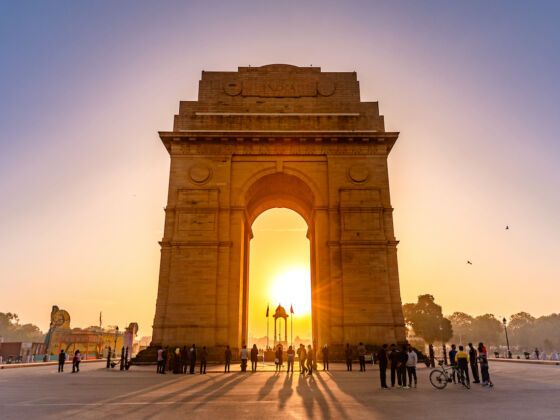While growing up in suburban Detroit in the early 1980s, I went with my parents to a special showing of the David Lean adaptation of E. M. Forster’s A Passage to India. After leaving the theater, I had a burning desire to outfit myself in safari-themed clothes from a new store in the mall called Banana Republic and book my own passage to India. It was a desire that had less to do with any notions of the real India than my own genuine dissatisfaction with the Midwest.

Roughly 30 years later, I am finally about to embark on my first trip to India. While getting ready for the trip, I’ve been studying various guidebooks, and in my Lonely Planet, I came across the following striking bit of advice:
When seeking directions from people on the street, refrain from posing questions in a leading manner. For instance, it’s often best to ask, ‘Which way to the museum?’ rather than pointing and asking ‘Is this the way to the museum.’ This is because you may well receive a fabricated answer… There is no malicious intent in this misinformation — they’re just trying to be polite, as an unsympathetic ‘no’ sounds so unfriendly.
This advice reminded me immediately of a section from Chapter Two of A Passage to India, in which an Indian man asks his servants if dinner is ready:
- “Servants shouted back that it was ready. They meant that they wished it was ready, and were so understood, for nobody moved.”
In fact, throughout the book, Forster describes Indian characters saying things based not on truth but rather on what might sound more pleasing to their listeners.
Certain readers of this website may be nodding in recognition here — ah, yes, be careful when speaking to those [fill in the blank here with whatever nationality comes to mind: Indians, Arabs, Asians, Africans, Latin Americans…]. You can’t take their words at face value. Conversation serves a different purpose in tropical lands than it does in northern climates where people say what they mean and mean what they say.
Oh, really?
Just recently, I read in the New York Daily News about police cracking down on pedicab drivers who’ve been overcharging tourists for rides. The internet is riddled with complaints about overpriced so-called “tours” of homes of the stars in Los Angeles. And last month, on my first trip to Las Vegas, I got “tunneled” by an exceedingly friendly taxi driver, who took a roundabout way to my hotel on purpose so he could charge me double the normal fare. (Though to be fair, during our ride, the driver was also kind enough to warn me to beware of people in Vegas trying to cheat hapless tourists.)
Wherever we travel, we face a frustrating conundrum: Many of us say we want our experiences to be authentic and honest, but in fact that’s true only sometimes, when it’s safe and convenient for us.
For example, my experience of being ripped off in Vegas was very “authentic.” There was something real in my exchange with my dishonest driver that was missing from the free, comfortable, yet antiseptic airport tram that took me from my gate to baggage claim or the manufactured thrills of my rollercoaster ride in the hotel New York, New York. Since my return from Vegas, I’ve told the story of being tunneled several times and watched others nod in recognition. However, I don’t feel glad for that experience. I feel ashamed for the very real part I played in that true story, namely, the part of the silly, gullible tourist, the easy mark.
The trouble with looking for authenticity in travel is that not only will you never know when you’ve really found it, but also even when you do, you may not want it so much. Maybe most travelers really are better off looking for something more akin to the rollercoaster at New York, New York: a series of calibrated jolts to the system.
As we ride up and down and upside down, we scream and screw our eyes shut, pretending to fear that at any moment our train could go off the rails, while at the same time feeling secure in the knowledge that our ride has been pre-tested to make sure we stay safe.